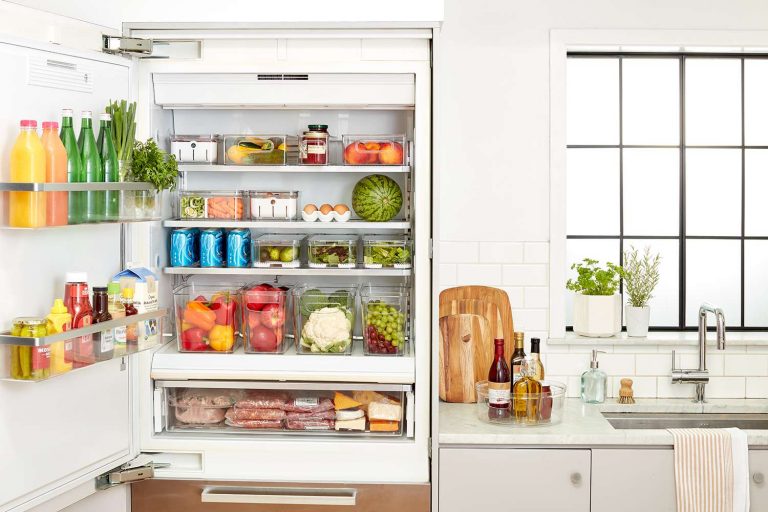Food waste can lead to many different environmental crises. Studies have shown that it’s one of the top 10 leading causes of climate change in recent years.
Reducing food waste in your home is one of the most impactful ways you can help the environment, and it can also help you save a lot of money.
Besides recycling and composting, organizing your fridge properly is also beneficial.
How to Organise Your Fridge Efficiently
You can make your refrigerator a powerful ally in the fight against food waste. When you thoughtfully arrange the food in your fridge, you can extend the shelf life of your groceries and reduce the likelihood of forgetting or spoiling items.
Here are some of the ways you can maintain a well-organized fridge and contribute to reducing food waste in your household:
Prepare the Grounds
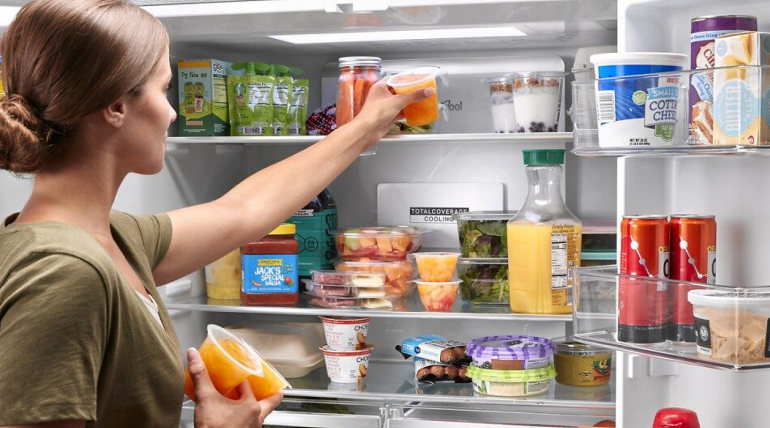
When organizing a fridge, whether you have ADHD or not, what helps is cleaning off all the countertops first, so the process is less stressful.
When you have lots of counter space, it’s easier to pull all food items out and sort them into categories. Get rid of all the expired things and try to recycle them as much as possible. Don’t forget to clean your fridge while organizing it to prolong its life.
Escape The “Out Of Sight, Out Of Mind” Trap
One of the main struggles for people with ADHD is that if they can’t see an item, they forget that it’s there, which makes it more likely to go to waste.
If you struggle with that, prioritize your fruits and vegetables, as they will likely go bad before anything else. Put them in places where you can see them every time you open the fridge, preferably at the eye-line.
Pick out one shelve for leftovers and know they’re all there so you can take them out and finish them before they go bad.
First in, First Out
Organize your fridge by expiration dates and times. Put leftover and prepared foods on top. Keep things like jars for sauces and eggs in the middle. Put things you don’t touch very often on the bottom shelf, but you still know they’re there. If you buy a new food item you already have, move the old one to the front and put the new one towards the back.
The most important thing is to keep a regular inventory of the things you have in your fridge so you know what needs to be eaten first and what you can use.
What’s the Date?
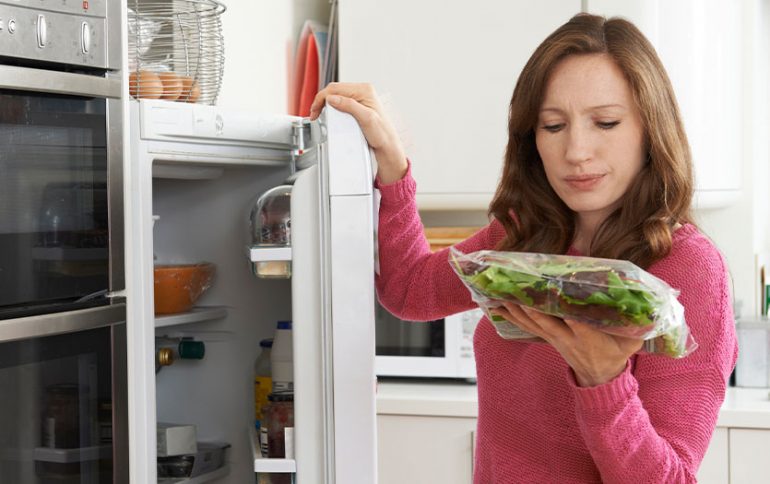
Learn the difference between “best by”, “sell by”, and expiration dates. Expiration dates contribute to a lot of food waste.
The “sell by” date is completely irrelevant to you – it’s only relevant to the store. The “best by” date doesn’t mean that after it the food item is bad. Expiration dates aren’t based on science and date or regulated.
The food regulation system is flawed, and it’s best to trust your sense of smell and sight (if they’re not impaired).
Store Food the Right Way
Storing your food properly in the fridge is crucial for reducing food waste at home.
Fruits and vegetables release gasses that speed up their ripening process. Keeping them separate as much as possible will prevent your produce from going to waste.
Keep the produce out of the fridge when it isn’t ripe yet. Once they get closer to ripeness, put them in the fridge – that’ll help slow the ripening and stop them from going to waste.
Freeze, Don’t Waste
Utilize your freezer. If something is going bad, put it in there. It’ll preserve it for a lot longer. This method is perfect for leftovers as you can easily reheat them later and have a ready meal.
It’s All About Planning
Prepare and plan the food items you usually forget and avoid. If there are items you know you won’t eat later unless you have them prepared, make a conscious decision to do that before your brain fights you on it.
If meal prepping works for you, utilize it in your fridge to prevent food waste.
How To Make Produce Stay Fresh Longer
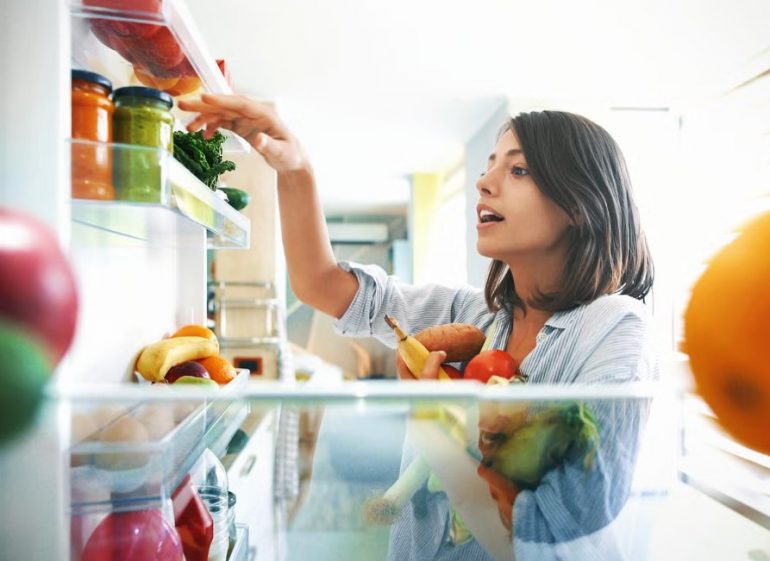
No one wants to throw away food. Instead of letting your produce go to waste, you can prolong its shelf life and minimize the amount of food items you throw away.
Here’s how to store different types of fruits and vegetables:
- Onions and potatoes – These vegetables are staples in all households. However, avoid storing them next to each other. Onions emit ethylene gas, which causes the potatoes to spoil faster. Keep the potatoes in a cool, dark area to last longer, ideally away from the windows. If you have a paper bag, a cabinet, or a drawer to store them in, that’s even better. However, if you tend to forget what you have, keep them on the countertop where you can see them.
- Tomatoes – Store them out of the fridge at room temperature to make them stay fresh longer. You’ll also notice a difference in their flavor. Mangoes and bananas also do better if stored outside the fridge.
- Avocados – It’s ideal to store avocados unripe on the counter. If you want to speed up the ripening process, place them in a paper bag with an apple. Once avocados ripen, transfer them to the refrigerator to slow the ripening process and preserve them until you are ready to eat them. If you buy too many avocados at once and don’t want them to get all ripe simultaneously, place a few unripe avocados in the refrigerator to slow them from ripening.
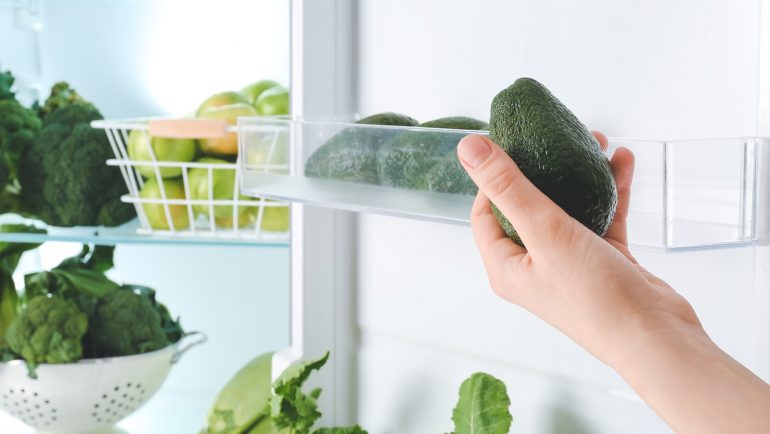
- Apples – The ideal storage temperature for apples is -1 to -1,6 degrees C. Refrigerate them to prolong their crisp texture and lifespan. Like apples, citrus doesn’t continue ripening on the counter but starts decomposing and drying out. Refrigeration can slow this down.
- Ginger – Store it in an airtight bag in the fridge and wipe it off to remove any excess liquid, especially if the piece is cut.
- Plant-based milk – It’s important to keep it cold, especially after opening. However, avoid storing your plant-based milk on the refrigerator door. Since the door is often opened and closed, this is where the temperature fluctuates the most. It’s best to keep items that aren’t so sensitive on the door, like condiments. Store plant-based milk in a cold spot in the body of the refrigerator.
- Carrots and celery – If you purchase carrots with the greens on, cut them off before storing them so that they don’t continue to draw nutrients out of the roots (the actual vegetable). A good way to preserve the freshness and crispness of carrots is to store them in a sealed container covered in water and change them every 4 to 5 days. Preserving freshness for celery is the same as carrots.
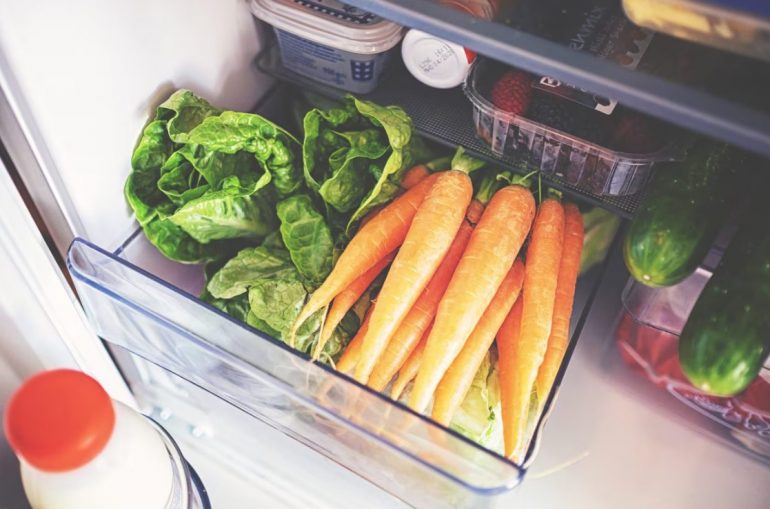
- Cauliflower and broccoli – They stay fresh and crisp longer when you transfer them into a sealable bag with a (paper) towel to absorb any excess moisture.
- Mushrooms – Store them in an airtight bag or container. Don’t wash the mushrooms until you are ready to use them to avoid extra moisture. Don’t rinse them under running water – use a wet paper towel or cloth to clean them. If you purchase mushrooms in bulk, store them in your refrigerator in a paper bag or cloth bag with the top open to allow them to breathe.
- Cucumber – Store cucumbers by wrapping them tightly in a paper or regular towel. Place them into a resealable bag with a small air hole. If you are storing a lot of cucumbers, it is best to wrap them individually.
- Berries – Wash your berries (except raspberries) in a vinegar bath. Soak them in 1 cup vinegar and 5 cups water for 5 minutes, drain them, and let them dry on a towel. The vinegar will help destroy any bacterial spores that may have been on the berries and will preserve them for longer. To store your berries, transfer them to a towel-lined container. Don’t shut the container to allow airflow.
A Few Additional Tips
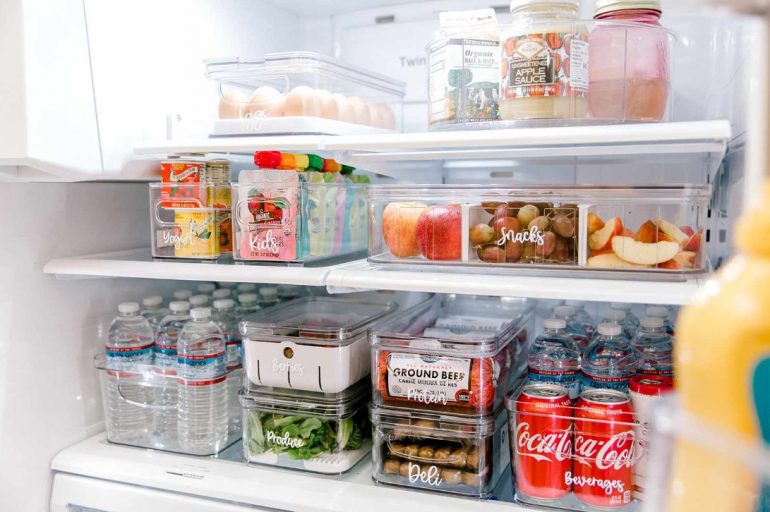
Make sure that your fridge drawers aren’t more than 3/4 full. Packing produce into the drawers decreases airflow and causes it to rot faster.
If you want to avoid cleaning rotten food off your fridge, experienced local cleaners suggest checking If your refrigerator drawers have a humidity setting. Store your produce that’ll rot in a low humidity setting and the produce that’ll wilt in a drawer with a high humidity setting.
Fruits can give off high levels of ethylene, a ripening agent that can spoil certain vegetables if kept in the same drawer. It’s important to know what fruits and vegetables can go together.
Produce that’ll stay crisp and fresher longer at high humidity levels are broccoli, brussels sprouts, cabbage, carrots, cauliflower, cucumbers, eggplant, green beans, herbs, leafy greens, peas, peppers, strawberries, summer squash and watermelon.
Produce that last longer at low humidity levels are apples, avocados, cantaloupes, figs, honeydew melons, kiwis, mangoes, papayas, pears, plantains and stone fruit, such as apricots, nectarines, peaches, plums.
If you have vegetable scraps, collect them in an airtight bag to make vegetable stock out of them.
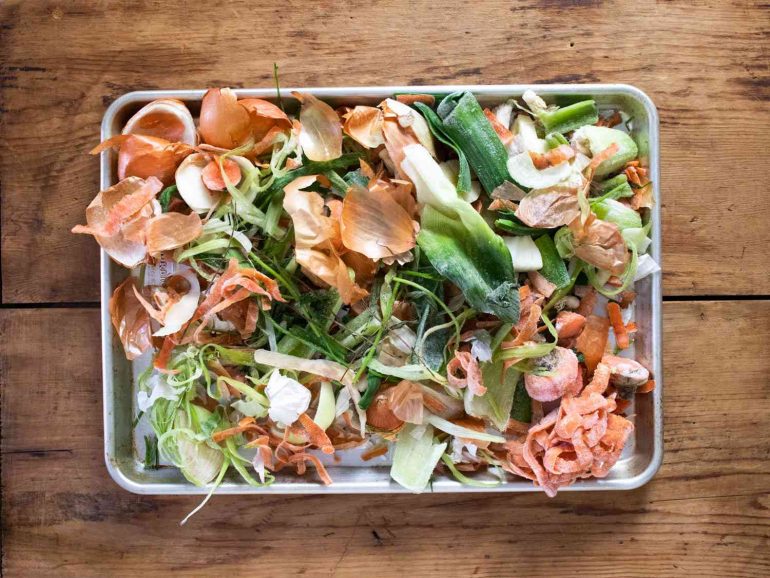
Think of things like onion skins, garlic skins, the tops of carrots, the bottoms of celery, and little bits and pieces of things you couldn’t use.
When the bag fills up, put it on the stove with water and bring it to a boil. Add any seasonings you want. Boil it down, strain it, and squeeze out all the juice.
Another helpful tip when dealing with the items in your fridge is to build the recipes for your meals from the bottom up.
Start with the ingredients you have and look for recipes that use them. There are different website generators and apps that do this. This way, you can use your produce before it goes bad.
When grocery shopping, go for loose produce as it allows you to control the amount you buy. This way, you’ll avoid buying a giant bag of potatoes that you likely won’t get through before they go bad, and less will go to waste.
Bring your own reusable mesh bags, and ensure you’ve eaten before going to the grocery store. The amount of things you buy that you don’t need and will likely end up as waste if you go grocery shopping hungry increases.

